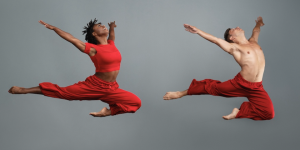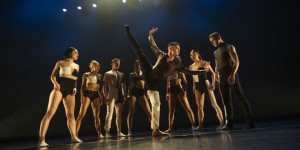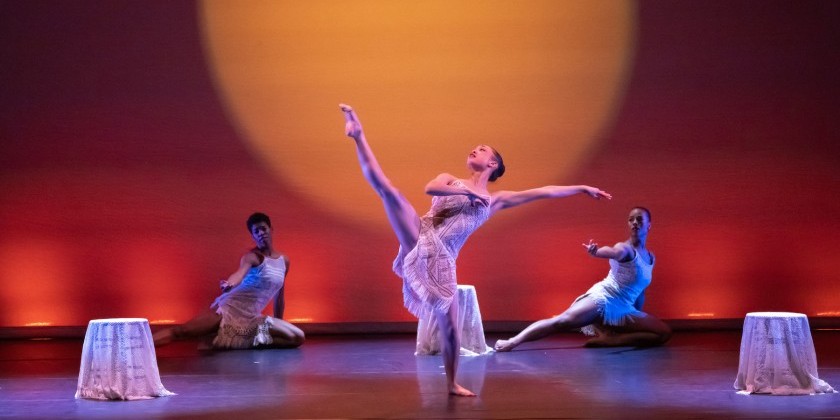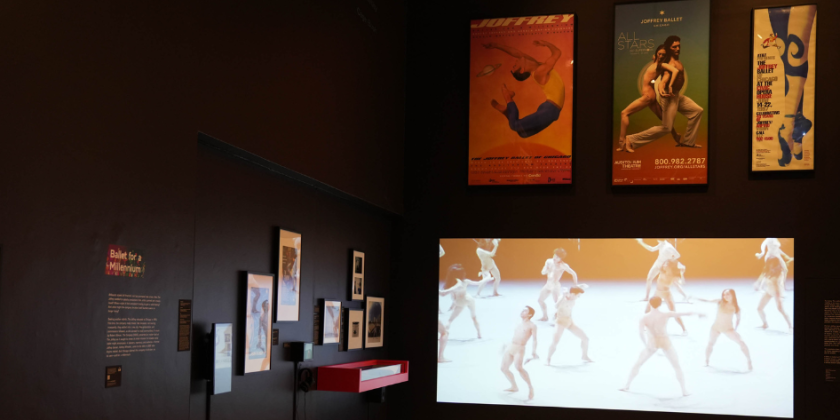IMPRESSIONS: Alvin Ailey American Dance Theater's 2023 Season at New York City Center
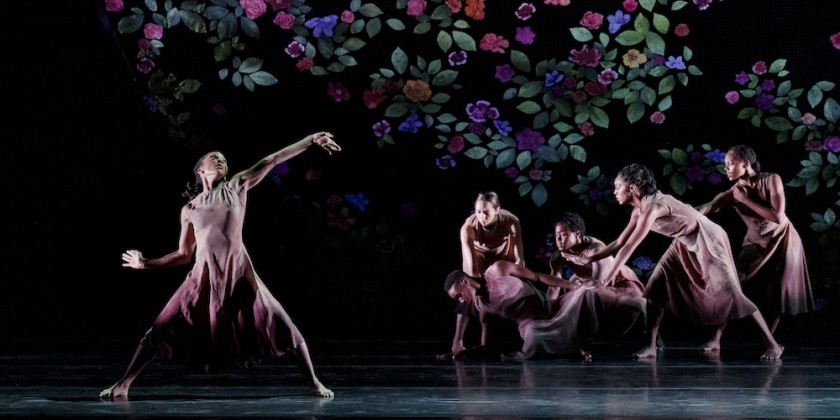
Classic Ailey Repertory with Premieres by Elizabeth Roxas-Dobrish and Amy Hall Garner
Founder, Alvin Ailey; Artistic Director Emerita, Judith Jamison; Associate Artistic Director, Matthew Rushing
Company members: Jeroboam Bozeman, Khalia Campbell, Patrick Coker, Shawn Cusseaux, Sarah Daley-Perdomo, Caroline T. Dartey, Isaiah Day, Coral Dolphin, Solomon Dumas, Samantha Figgins, James Gilmer, Vernard J. Gilmore, Ashley Kaylynn Green, Jacquelin Harris, Michael Jackson, Jr., Yazzmeen Laidler, Yannick Lebrun, Xavier Mack, Renaldo Maurice, Ashley Mayeux, Corrin Rachelle Mitchell, Chalvar Monteiro, Alisha Rena Peek, Miranda Quinn, Hannah Alissa Richardson, Deidre Rogan, Kanji Segawa, Constance Stamatiou, Christopher Taylor, Jermaine Terry, De’Anthony Vaughan, Isabel Wallace-Green, Christopher R. Wilson
Special guests: Jau’mair Garland, Michael Francis McBride, Kali Marie Oliver, Akua Noni Parker, Jessica Amber Pinkett
Choreography: Kyle Abraham, Alvin Ailey, Mary Barnett, Ronald K. Brown, Amy Hall Garner, Alonzo King, Jamar Roberts, Elizabeth Roxas-Dobrish, Paul Taylor, Hans Van Manen
Dates: November 29 - December 31, 2023
Any choreographer lucky enough to win a commission from the Alvin Ailey American Dance Theater must consider how to showcase this troupe’s exceptional dancers. This is a company where glamour and virtuosity have never gone out of style. Yet underscoring the dancers’ brilliance is not enough. During a long and distinguished history, AAADT has acquired a collection of masterworks that affect audiences with their humanity, embody cultural traditions, and impress with the ingenuity of their choreographic design. These are works of substance; and even a razzle-dazzle favorite like Ailey’s Pas de Duke must take a backseat to a ballet with a grand conception, like Memoria.
Such masterworks were the backbone of the Ailey company’s December 2023 season at New York City Center, featuring perennially engaging works by Ailey himself, and more recent importations by Hans Van Manen, Ronald K. Brown, and Alonzo King, among others.
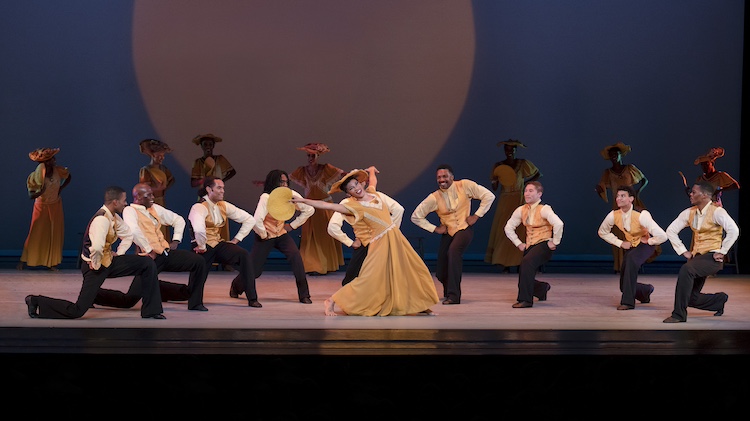
The Ailey Classics program on Dec. 2 offered a string of gems, including excerpts from Memoria, Night Creature, Masekela Langage, and For ‘Bird’ — With Love, among others; it was quite a smorgasbord. Without slighting Revelations, which concludes the program and which never loses its heartfelt appeal, it must be said that Memoria exerts a special fascination. Surely the opening section is one of the most transcendent pieces in the modern dance repertoire, thanks to its remarkable structure. Here the soloist and her two guardians form a series of open triangles, which an ensemble penetrates and effortlessly traverses. The piece displays Ailey’s extraordinary command of space.
It would be interesting to know what Ailey had in mind when he composed Memoria as a tribute to his deceased colleague, Joyce Trisler, in 1979. An image in which dancers glom together with their heads pressed one atop another can’t help but recall a similar pile in Bronislava Nijinska’s 1924 Les Noces, and it is tempting to speculate that the triangles in the opening section of Memoria may have a similar origin. Triangular shapes feature prominently in Nijinska’s ballet, where, via the theories of painter Wassily Kandinsky, they are associated with spirituality. While Nijinska’s triangles are solid masses, however, Ailey’s are transparent outlines — just three points in space, which vanish and reappear as the choreographer manipulates them. As the ensemble members migrate through, the scene suggests a higher dimension coexisting with the earthly plane, a thought that makes the spine tingle even before the ensemble members don ghostly, white smocks.
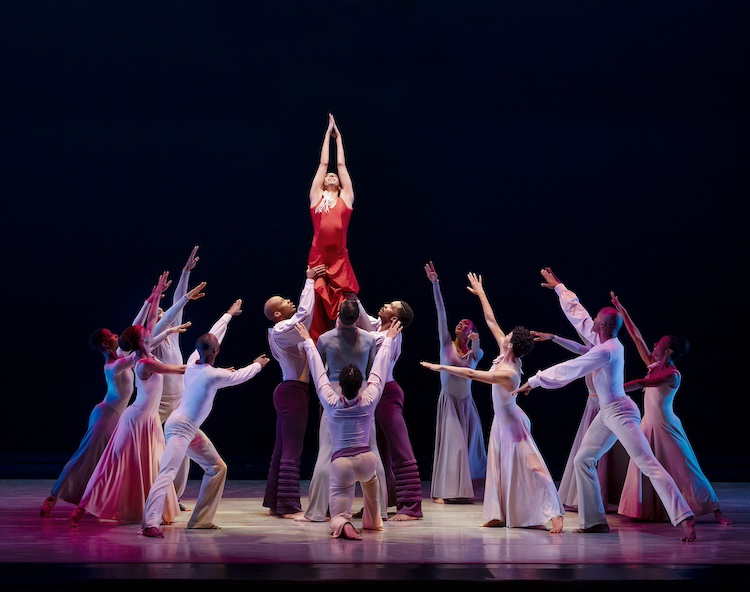
Choreographers, like other artists, may engage in subtle dialog with one another; and watching Memoria this season also brought to mind the eerie, interpenetrating groups of Trisha Brown’s M.O., her 1995 setting of Bach’s Musical Offering. One masterpiece may be the stepping stone to another, when choreographers embark on spiritual journeys. In fact, it might be interesting for the AAADT to acquire M.O. — not because they need another woo-woo ballet, but because these eminently versatile performers might enjoy tackling Brown’s postmodern style.
Memoria, naturally, also frames some wonderfully expressive dancing, not limited to the delicacy of Sarah Daley-Perdomo in the central role (her soulfulness underscored later in the solo Reflections in D), but extending all the way through the ensemble, with Jacquelin Harris and Chalvar Monteiro deserving special mention. On Dec. 14, when the company performed Memoria in its entirety, the layered masses of the finale displayed outstanding musicality and a unity so startling it was hard to believe one’s eyes. Those young people from the Ailey School were amazingly polished.
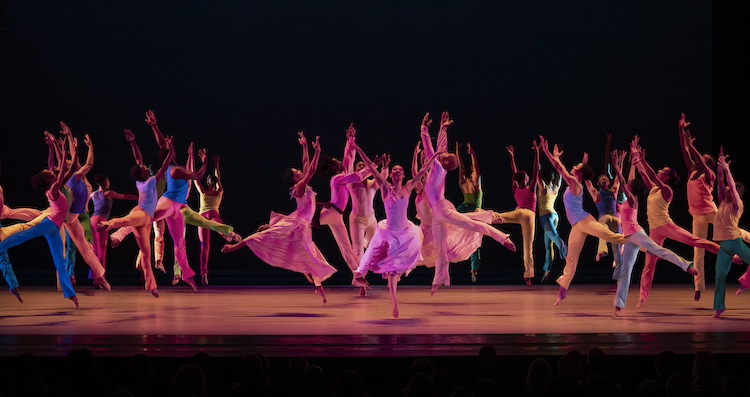
The Ailey Classics program offered a wealth of beauty, and it would be remiss not to mention Constance Stamatiou’s shimmering appearance in Night Creature, especially the moment of rapture when with urgent, fanning gestures Vernard J. Gilmore seems to coax her sinuous body into flame and Duke Ellington’s luscious music takes possession of us. Stamatiou shows a very different, but equally dramatic side of herself in Masekela Langage,where her movements are tense, not fluent, and she telegraphs anger and defiance. In Love Songs, Gilmore displays his lyricism and subtle phrasing; and in For ‘Bird’ — With Love, Yannick Lebrun fairly crackles and explodes with electricity.
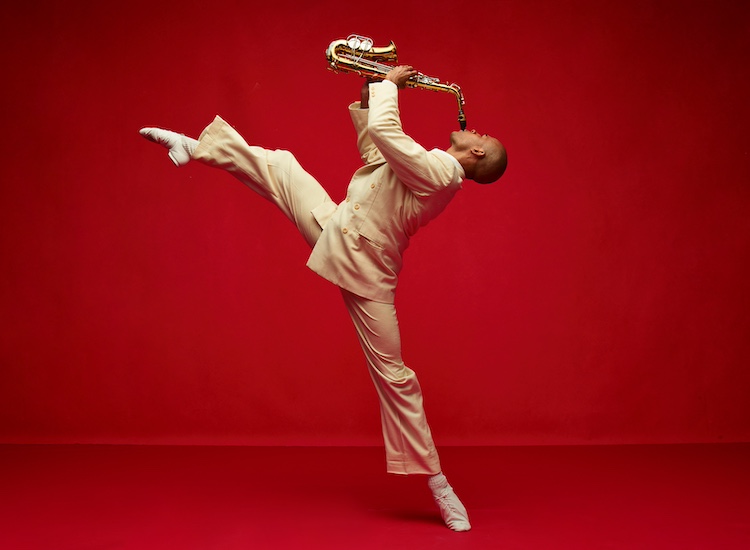
Lebrun seemed to be everywhere this season, giving us a chance to reflect on his special talents. Inexhaustible energy is only the beginning. A wonderfully supportive partner, he attacks movement fearlessly and has a punctilious attention to timing and detail that clarifies his dancing. Despite this rigor, Lebrun is capable of letting go. This season he seemed to attain perfect freedom in Ronald K. Brown’s Dancing Spirit, entering the dance’s powerful stream of rhythm.
Like Memoria, Dancing Spirit is a piece that deals in mysticism. Brown created it to honor Judith Jamison on her 20th anniversary as artistic director, but much more than a simple pièce d’occasion, this gorgeous dance draws on the traditions of Yoruba pantheism which took root in the Americas. Brown is carrying on the work of the late Katherine Dunham, though he came to this material independently through study with Afro-Caribbean master teacher Baba Richard González, and through his own experiences in Cuba. In Dancing Spirit, Brown traces a connection between Jamison and Yemaya, the mother of humanity, though there are also references to other orishas, notably the slashing gesture of Ogun, who clears a path.
The hypnotic opening suggests a procession; then the steps begin to vary, and the dance subtly expands until nine dancers divided into groups occupy the fragmented scene. Dancing Spirit works its way gradually toward a pitch of excitement, combining a feeling of reverence with joyful abandon. Bodies undulate and hips swish, but the leaders of the group — Lebrun and Stamatiou — seem to ride above the waves and have a way of calming them.
In a breakout solo, Stamatiou twists and dives, flouncing her long, blue-bordered skirt and scooping the air. When a giant moon appears on the backdrop, she leads the ensemble grouped together in a wedge, gathering up her skirts, wagging her finger, clapping and dodging. As is often the case with Brown’s work, viewers may feel the urge to join in.

Dancing Spirit is a fine example of a dance that bears its author’s personal stamp; and the same can be said of Following the Subtle Current Upstream, by Alonzo King. There’s no mistaking King’s extravagant aesthetic, the dancers sometimes linked, their figures wiry, bent, and pushed off-center. A thunderstorm and a dramatic lighting plan suggest the sublime power of nature, but it’s the sumptuousness of Isaiah Day and Coral Dolphin’s ferocious glamour that take this piece where it wants to go — over the top.
Emerging choreographer Jamar Roberts, in his neatly structured ensemble piece Ode, seems to have a knack for imparting his own movement style to others. Even the all-female cast of Ode, led by Jaquelin Harris. displays something like the force of Roberts’ own dancing, alternating between sharp gestures and moments of release. Going forward, it will be interesting to see if Roberts is able to tap the lyricism in his dancers, not simply carving space but animating his designs with a cantilena of movement.
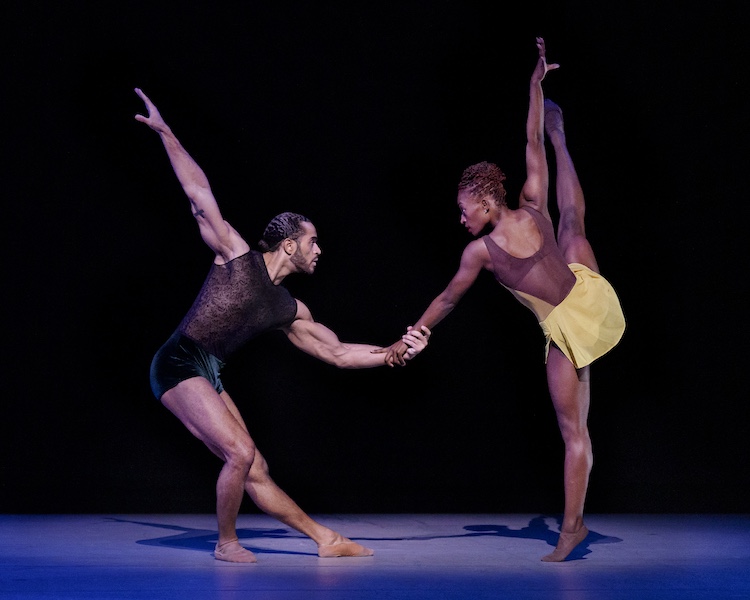
Other pieces simply want to test these marvelous dancers and push them to their limits; and perhaps there was a sly humor at work in assembling the December 7 program that combined Hans Van Manen’s Solo with Alvin Ailey and Mary Barnett’s Survivors, and Me, Myself and You, a season premiere by Elizabeth Roxas-Dobrish. All these works take their interpreters to extremes, either technical or emotional.
Solo demands marvels of speed and coordination from its three interpreters, Chalvar Monteiro, Yannick Lebrun, and Patrick Coker, whose job it is to keep smiling, and bring their quirky, discombobulated variations to a graceful ending. Finally acknowledging their effort, in a final image Van Manen jokes that they have been crucified.
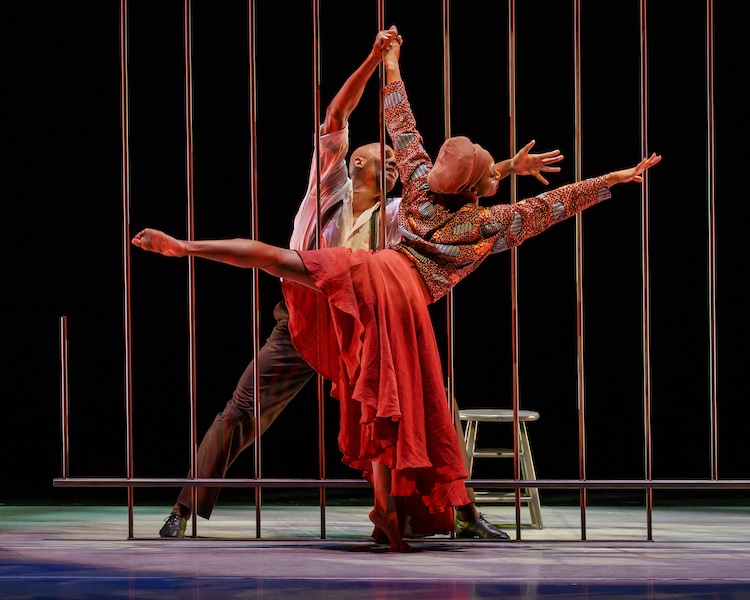
Survivors refers to a different kind of ordeal — the struggle against Apartheid in South Africa. If Solo is full of finicky, nattering moves, by contrast, the gestural language of Survivors is on a grand scale. Vernard J. Gilmore portrays Nelson Mandela with clenched fists and sorrowful contractions, while Jacquelin Harris balances securely on one leg and inspires us with the eloquence of her gestures.
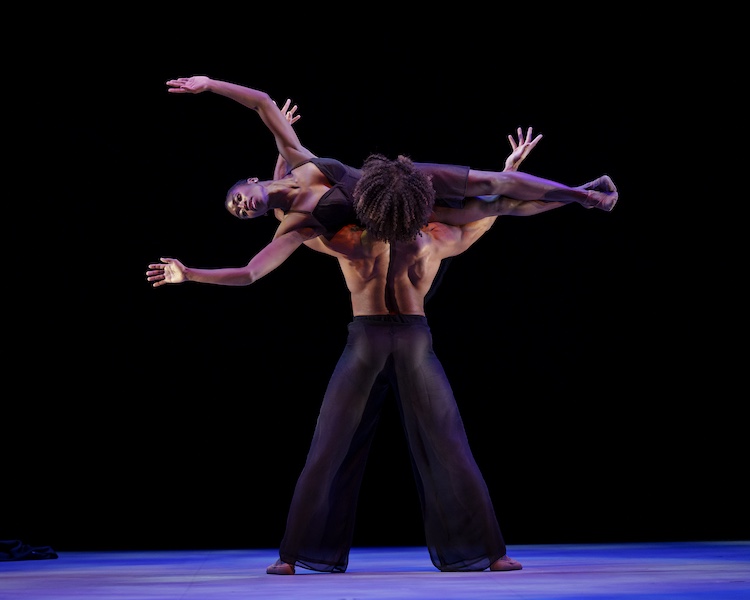
Roxas-Dobrish’s new piece opened this Dec. 7 program with a display of breakneck partnering. In Me, Myself and You, Caroline T. Dartey portrays a lady who finds herself alone in her boudoir, sighing wistfully, when one of her past indiscretions — a large, half-naked one — emerges from the full-length mirror. James Gilmer is still the man of her dreams, and she scarcely has time to caress his head fondly before the lifts begin. Then Dartey is swung around, dropped from a height, seized, and manhandled in ways that look anything but safe, even if Gilmer is a rock. How do they both control their breathing, so this acrobatic pas de deux flows effortlessly? How does she, and how do we keep our eyes from bugging out? Somehow, the choreographer also manages to show us Dartey’s line and her lofty jump, so Me, Myself, and You is a clever showcase, even if it does feel like a guilty pleasure. This season, Dartey also made a strong impression in the “Fix Me Jesus” section of Revelations (a virtuoso number of a different sort), with her self-possession and rich physicality.
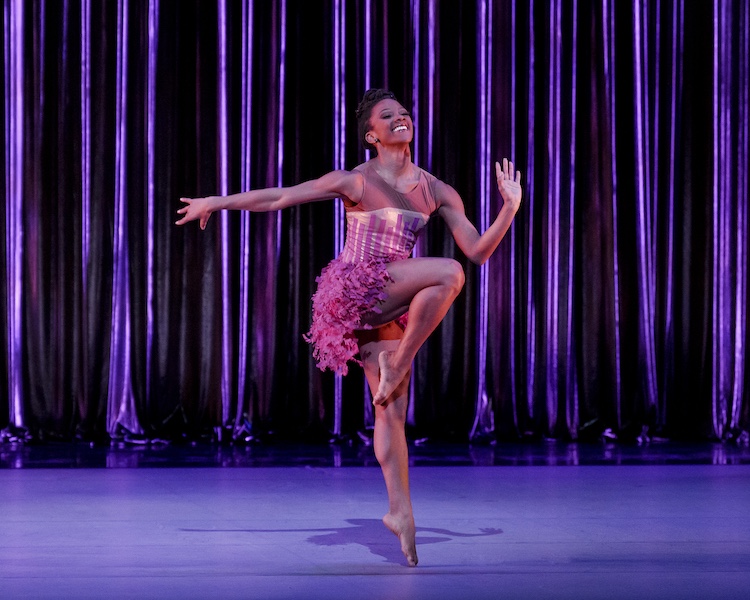
The other new piece this season, CENTURY, by Amy Hall Garner, is an even more ambitious platform, with a series of star turns following each other in succession as the choreographer celebrates a hundred years of good times and great music by the likes of Count Basie and Duke Ellington. The cast holds nothing back, and we could all use a little fun. Yet in its relentless attempt to entertain CENTURY achieves less than dances of a more conceptual character. Though merely a divertissement, it will no doubt be useful in the repertoire, whenever high spirits are called for; and maybe, gradually, these highly individual performers will find a way to make it feel more personal.




